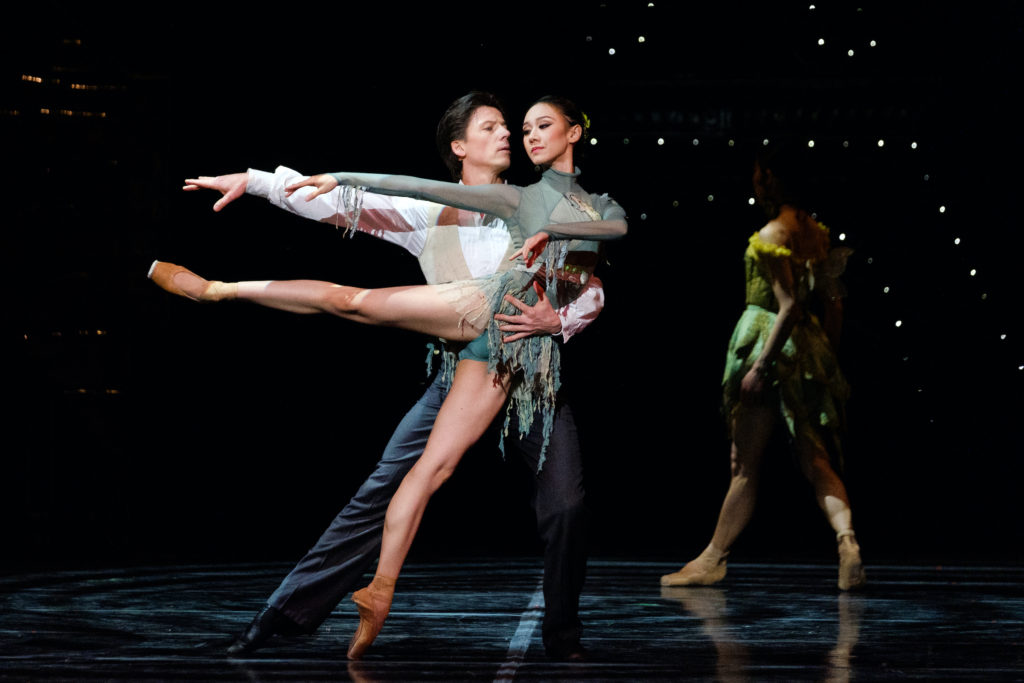Winnipeg, June 2020 - Vancouver Ballet Society
- Home
- City Reports 2020 - 2023
- Winnipeg, June 2020

By Holly Harris
All season long, the Royal Winnipeg Ballet eagerly danced toward the zenith of its milestone 80th anniversary season, a retrospective slated to run at the Centennial Concert Hall in May. The mixed bill would have featured a trio of the company’s signature works chosen to celebrate the vision and legacy of three past artistic directors. Sadly, due to the global pandemic, theatres shut down before it could take place.
The Royal Winnipeg Ballet — North America’s second-oldest ballet company and the oldest surviving dance company in Canada — rose to international prominence under the guidance of artistic director emeritus Arnold Spohr (1958-1988). The cancelled spring line-up included what would have been a rare local performance of Agnes de Mille’s 1942 “cowboy ballet” Rodeo, set to Aaron Copland’s ebullient score, in tribute to Spohr, who brought it to the RWB in 1973.

Also on the cancelled bill was a work by Montreal-based choreographer and former RWB soloist Mark Godden, who has played a pivotal role in the company since being appointed its inaugural resident choreographer in 1990. His Angels in the Architecture, which features Godden’s trademark angular movement vocabulary and strong gestural language, premiered in 1992 during Australian John Meehan’s artistic directorship (1990-1994).
Finally, Toer van Schayk’s Seventh Symphony, first set on the RWB by the Dutch National Ballet, was intended to pay tribute to Dutch artist Henny Jurriëns, who took over the reins from Spohr in 1988. Jurriën’s tragic death with his wife Judy James (a former soloist with the Dutch company) in a car accident in 1989 sent shockwaves around the world. At the premiere, Seventh Symphony, set to Beethoven’s inspiring music, helped the company heal as it launched the RWB’s 50th anniversary. Jurriëns, who had been a principal with the RWB before becoming artistic director, remains closely associated with this ballet, one of the few he was able to program during his short tenure.
An alumni reunion, with former RWB dancers expected to flock from far and wide for the celebratory season finale weekend, was of course also cancelled, and is now being planned for a future date.

At least, before theatres shut down in March, viewers were able to see retiring principal dancer Dmitri Dovgoselets perform his final lead role, Matthew, a young painter in search of fame who falls in love with a cabaret dancer at the fabled Parisian nightclub Moulin Rouge, in Jorden Morris’ Moulin Rouge: The Ballet.
A former member of the National Ballet of Ukraine, Dovgoselets joined the RWB in 1998. Over the years, he has enthralled audiences with this powerhouse athleticism and expressive artistry, witnessed in such lead roles as Romeo in Rudi van Dantzig’s Romeo and Juliet and Prince Solor in this year’s season opener, La Bayadère. Dovgoselets was also a supportive and simpatico partner, as when he performed with Evelyn Hart during the 2017 premiere of James Kudelka’s Vespers, and with Tara Birtwhistle (his wife) in Norbert Vesak’s Belong pas de deux in 2008.
Morris’ ballet also unexpectedly featured another final curtain call, this one by second soloist Sarah Davey, who was also forced to retire from the stage early, before the cancelled May shows. Davey joined the company in 2009, with her RWB debut during Moulin Rouge’s premiere that year. Her farewell performance of the French cancan dancer La Goulue created a poetic bookend by bringing her dance career full circle.

The Royal Winnipeg Ballet has survived floods and fires, triumphs and tragedies, throughout its 80 years, and not least of all has navigated the perennially choppy fiscal waters faced by companies today. The current pandemic poses yet another serious threat due to the ongoing challenges of physical distancing and necessary safety protocols, creating an epidemic of uncertainty faced by arts groups everywhere.
Now led by artistic director and CEO André Lewis, who began his tenure in 1996 and was joined by Birtwhistle in the new position of associate artistic director in 2018, the RWB continues to be resilient. Unable to perform live, let alone undertake a tour, the company is keeping in touch with audiences through social media and other online channels. One example is the recent release of a video featuring company dancers, filmed individually in their homes performing an excerpt of Godden’s Angels in the Architecture, a poignant contemporary ballet that continues to resonate with its message of hope, faith and unity
Elsewhere, the city’s second most prominent dance company, which has survived its own perils throughout its 55 years, Winnipeg’s Contemporary Dancers, also suffered the effects of the pandemic. After presenting the Manitoba premiere of Animal Triste in February, featuring Montreal troupe Mayday in choreography by artistic director Mélanie Demers, WCD, too, had to cancel its final show of the season.
WCD artistic director Jolene Bailie, wrapping up her inaugural year at the helm, had intended to premiere her own work, VITALITY and the speed of life, in April, with its debut now planned for 2020-2021. The cancellation of what was to be her first full-length production with the company has created a rocky start to her tenure, testing the mettle and resolve of Bailie and her dancers.

